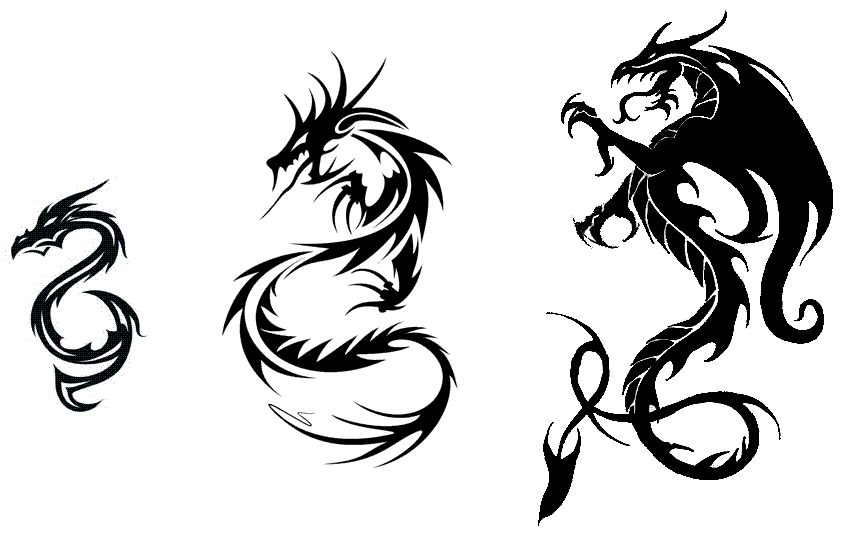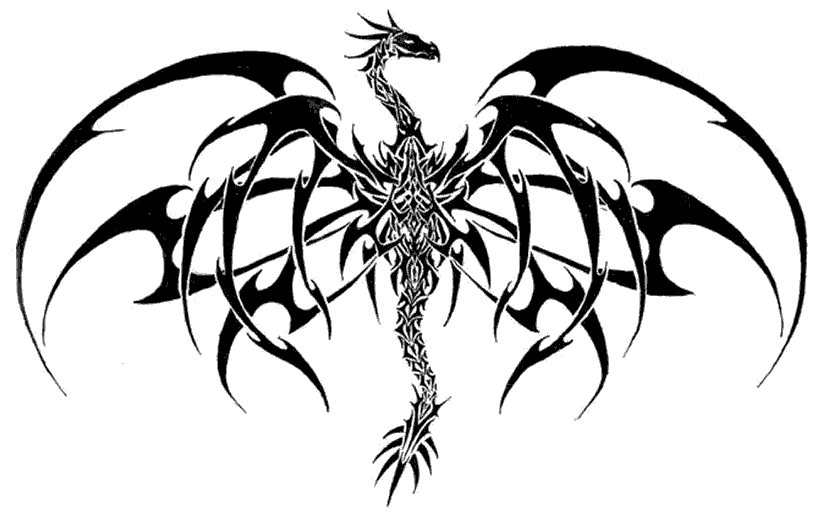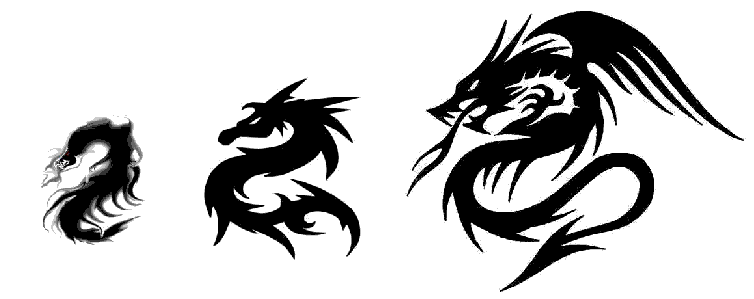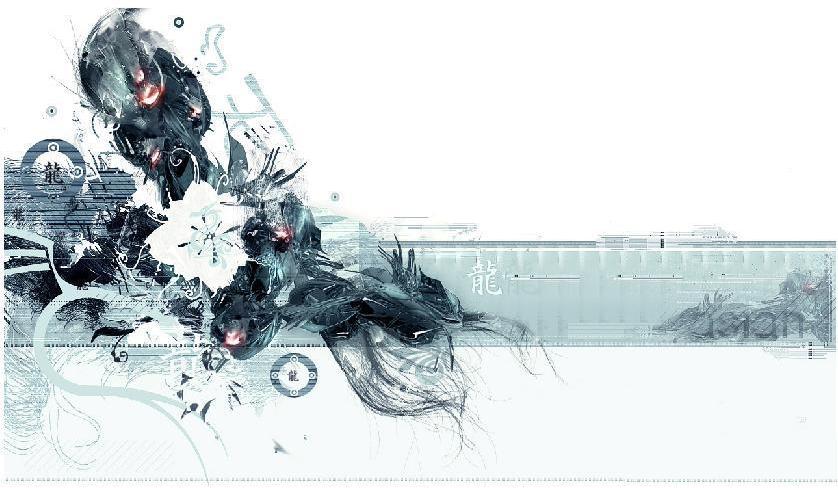
RYUJIN - Kami of the Sea ==========================================================================
Ryujin ("Luminous Being"). The Japanese dragon god of the sea. Ryujin lives in Ryugu his palace at the bottom of the sea. His daughter Otohime (Toyo-Tame) married prince Hoori. Ryujin controls the tidal flows with the magical Tide Jewels.
Ryujin or Ryojin ("dragon god"), also known as Owatatsumi, was the tutelary deity of the sea in Japanese mythology. (A tutelary spirit or patron deity serves as the guardian of, or an entity to watch over and protect, a particular site, person, culture, or nation.)
This Japanese dragon symbolized the power of the ocean, had a large mouth, and was able to transform into a human shape. Ryujin lived in Ryugu-jo, his palace under the sea built out of red and white coral, from where he controlled the tides with magical tide jewels. Sea turtles, fish and jellyfish are often depicted as Ryujin's servants.
Ryujin was the father of the beautiful goddess Otohime who married the hunter prince Hoori. The first Emperor of Japan, Emperor Jimmu, is said to have been a grandson of Otohime and Hoori's. Thus, Ryujin is one of the ancestors of the Japanese imperial dynasty.
Toyotama-hime (Japanese for "luminous jewel"), also known as Otohime, is a goddess in Japanese mythology, and the daughter of Ryujin, the god of the sea. She married the hunter Hoori and gave birth to a son, who in turn produced Emperor Jimmu, the first Emperor of Japan. After giving birth, she turned into a dragon or a wani and flew away.
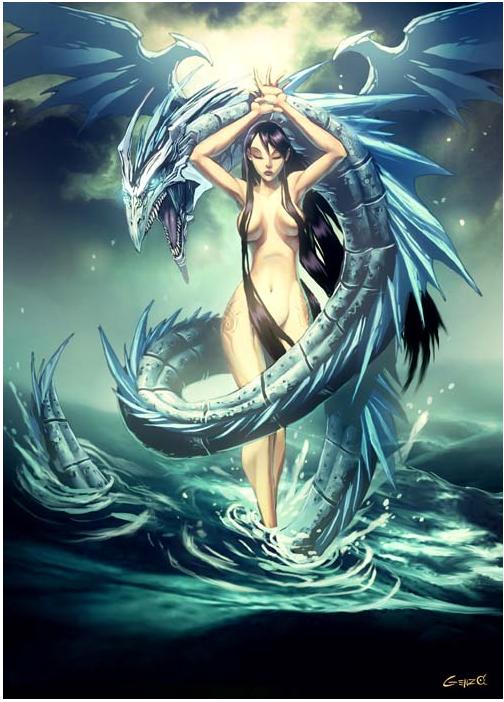
Whether it was because of his familial relation to the royal family or a patriotic loyalty, Ryujin was a fierce protector of Japan.
According to legend, the Empress Jingu was able to carry out her attack into Korea with the help of Ryujin's tide jewels. Many centuries ago the Empress Jingo planned an invasion of Korea. She prayed to Ryujin and sent the beach-god Isora to his temple. There he was given the Tide Jewels for the empress. The Japanese fleet then set sail towards Korea and the Korean fleet sailed out to confront them. When she saw the approaching fleet, Jingo quickly threw the Low Tide Jewel into the sea so that the tide receded at once and the Korean fleet was beached. The Koreans all jumped out of their ships onto the mudflats but at that moment the empress threw the High Tide Jewel and a tidal wave came in and drowned the men. The tidal wave also carried the Japanese fleet on to the coast, into the harbor and to victory. Later Ryujin personally presented the Tide Jewels, on a beautiful pink shell, to Prince Ojin, Empress Jingo's son. An annual festival, called Gion Matsuri, at Yasaka Shrine celebrates this legend.
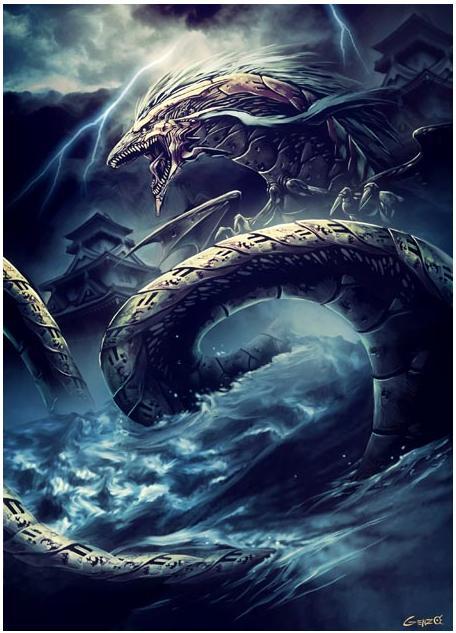
Ryujin shinko ("dragon god faith") is a form of Shinto religious belief that worships dragons as water kami. It is connected with agricultural rituals, rain prayers, and the success of fishermen.
Ryujin shinko faith is a form of religious thought and practice associated with dragons, a mythical sacred animal of ancient China. Although Japanese ryujin worship was influenced by China, the Japanese dragon as an object of faith was a deified serpent, a symbol of a water kami (suijin). Besides the term ryujin ("dragon kami"), ryuo ("dragon king"), and ryugu ("dragon palace") are also used.
The dragon kami is also connected with agriculture because of its characteristic as a water kami. Prayers for rain were performed at rivers, swamps, ponds, and deep pools which were regarded as the abodes of the ryujin. Agricultural rituals, such as prayers for rain and rope pulls, were carried out using a straw rope shaped like a serpent-like dragon. As a water kami, ryujin is connected with raijin, the kami of thunder, who brings forth rain and lightning. It is thought that a tornado occurs when the dragon kami ascends to heaven. Further, umi no kami (kami of the sea), thought to reside on the other side of the ocean and to rule over the sea, is connected with water kami belief and is frequently used as a synonym for ryujin. Fishermen prayed to the dragon kami for an abundant catch and calm seas. They carried out festivals for ryujin, celebrated as the kami of the sea and the kami of the dragon palace. These festivals are referred to by such names as uramatsuri ("inlet festival"), isomatsuri ("beach festival"), and shiomatsuri ("tide festival").
From the belief that metal nullified the magical powers of a dragon, there developed the idea of refraining from actions that would anger the serpent. Hence, fishermen believed it was taboo to drop metal in the ocean.
This was the background to the idea of the equivalence of the serpent kami, the dragon kami, and the sea kami. The motif of interaction between the sea kami and humans often appears in folk tales such as Urashima Taro and Ryugu Doji. The belief that wealth and treasure is brought back from the other side of the ocean also derives from this source.
=================================================================================
NB: The above text has been collected / excerpted / edited / mangled / tangled / re-compiled / etc ... from the following online sources :
RYUJIN - Kami of the Sea - eos.kokugakuin.ac.jp
RYUJIN - Kami of the Sea - www.pantheon.org
RYUJIN - Kami of the Sea - wikipedia article #1
TOYOTAMA-HIME - Daughter of Ryujin - wikipedia article #2
Japan and the Sea - article #1
Japan and the Sea - article #2
Japan and the Sea - article #3

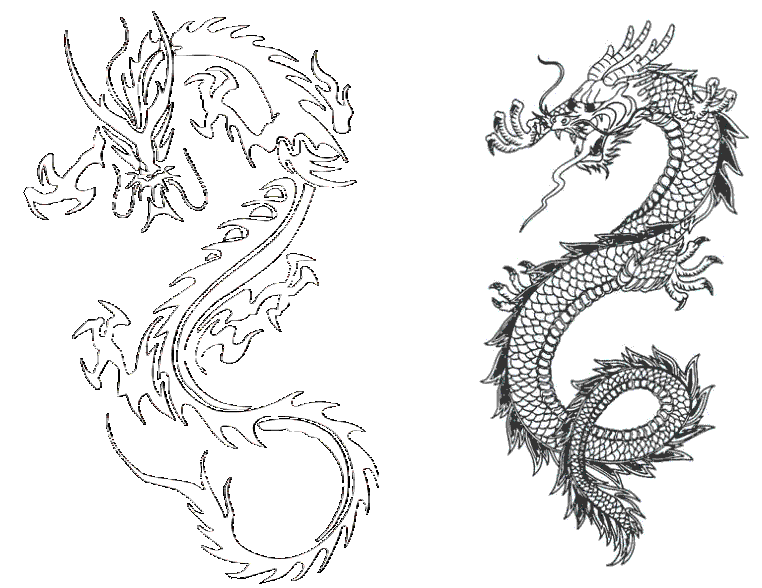
Asia is huge and possesses many dragons. The most powerful are the Lung (Horned Dragon).
The Horned dragons are also know as Lung. They are the most powerful of the Oriental Dragons.. They have the power to produce rain. The Chinese call dragons 'lung' (long) because they are completely deaf (this results in the term 'Lung', which means " the deaf". Deaf people in China are also called Lung.)
In early times there were four main kinds of horned dragon :
Heavenly Dragon (tian-long)
The heavenly or celestial dragon was the celestial guardian who protected the heavens, supporting the mansions of the gods and shielded them from decay. The Tian-long could fly and are depicted with or without wings they are always drawn with five toes while all other dragons are shown with four or three toes.
Spiritual Dragon (shen-long)
The spiritual dragons were the weather makers. These giants floated across the sky and due to their blue color that changed constantly were difficult to see clearly. Shen-long governed the wind, clouds and rain on which all agrarian life depended. Chinese people took great care to avoid offending them for if they grew angry or felt neglected, the result was bad weather, drought of flood.
Earth Dragon (di-long)
Dragons that ruled the rivers, springs and lakes were called Earth dragons. They hide in the depths of deep watercourses in grand palaces. Many Asian fairy tales spin yarns of men and women taken into these submarine castles to be granted special favors or gifts. Some of the di-long even mated with women to produce half-human dragon children.
Treasure Dragon (fu-can-long)
Believed to live in caves deep in the earth the treasure dragon has charge of all the precious jewels and metals buried in the earth.
Each of these dragons had a magical pearl that was reputed to multiply if it was touched. This pearl is a symbol of the most valuable dragon treasure, wisdom.
Over the ages many other forms and hybrid animals related to the Asian dragon have emerged as part of dragon lore. There are said to be nine distinct offshoots of the dragon that are carved as mystical symbols on doors, gates, swords, and other implements as means of protection and as harbingers of good fortune.
There are also nine ways the Chinese have traditionally represented these dragons, each one revealing a different dragon characteristic.
There are dragons carved on tops of bells and gongs due to the beast's habit of shrieking when attacked.
A second type is carved on the screws of fiddles since most dragons are fond of music.
A third is carved on tops of stone tablets because of dragons' love of literature.
A fourth is found at the bottom of stone monuments since dragons can support heavy weights.
A fifth is placed on the eaves of temples since dragons are always alert to danger.
A sixth appears on the beams of bridges since dragons are fond of water.
A seventh is carved on Buddha's throne since dragons like to rest.
An eighth is placed on the hilts of swords since dragons are also capable of killing.
The ninth is carved on prison gates since some dragons are fond of quarreling and trouble-making.
Generally, most types of Oriental dragons have a serpentine body and ferocious bearded face. One type had wings and another walked on water. 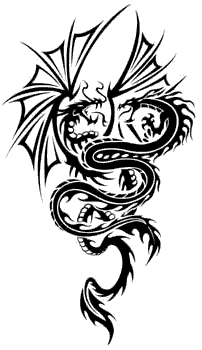
The scholar Wang Fu, who, lived during the Han dynasty (206BCE-220CE), detailed its morphology. There are 117 scales sheathing its long body. Of these scales 81 of them are infused with a benevolent essence or yang and 36 with a malign essence or yin. Although Oriental dragons are primarily benign their influence can sometimes be malavolent too.
It has been said that the Chinese dragons ability to fly stems from the Chiih muh, a bladder-like swelling on top of its head; and the potent power of the male dragon is derived from a large luminous pearl concealed under its chin or throat by folds of skin.
Unlike its western cousins, the eastern dragon undergoes a series of profound metamorphic transformations during its gradual progress from hatchling to mature dragon. This is a lengthy processspanning 3,000 years. They hatch from a brightly coloured gemlike egg laid a millennium earlier. When the first crack appears in an egg, the parents each cry out. The fathers cry whips up the winds and the mothers cry calms them. Lashing rain and booming thunder rocks the world as the egg bursts open and the young dragon is born.
Its first phase is that of a water serpent which takes 500 years to develop, at this point it is known as a kiao. After a millennium has passed it gains its scales. In general appearence it has become an anguinine dragon, with short limbs, an elongate tail and face, a profuse beard and four sharp claws on each foot.At this stage of its growth it is called a kiao-lung or just a lung, which translates as deaf for although its has ears at this stage it cannot hear. During the next 500 years, however, the lung grows a pair of horns. The dragon can hear through these horns, now it is known as a kioh-lung and this is the most familiar form of Asian dragon.
This is not its final change, however, another millennium is needed in order for it to gain the rarest characteristics of the oriental dragon, a pair of branching wings. Fully mature at last, the winged dragon is called a ying-lung and is truly a wonder to behold.
